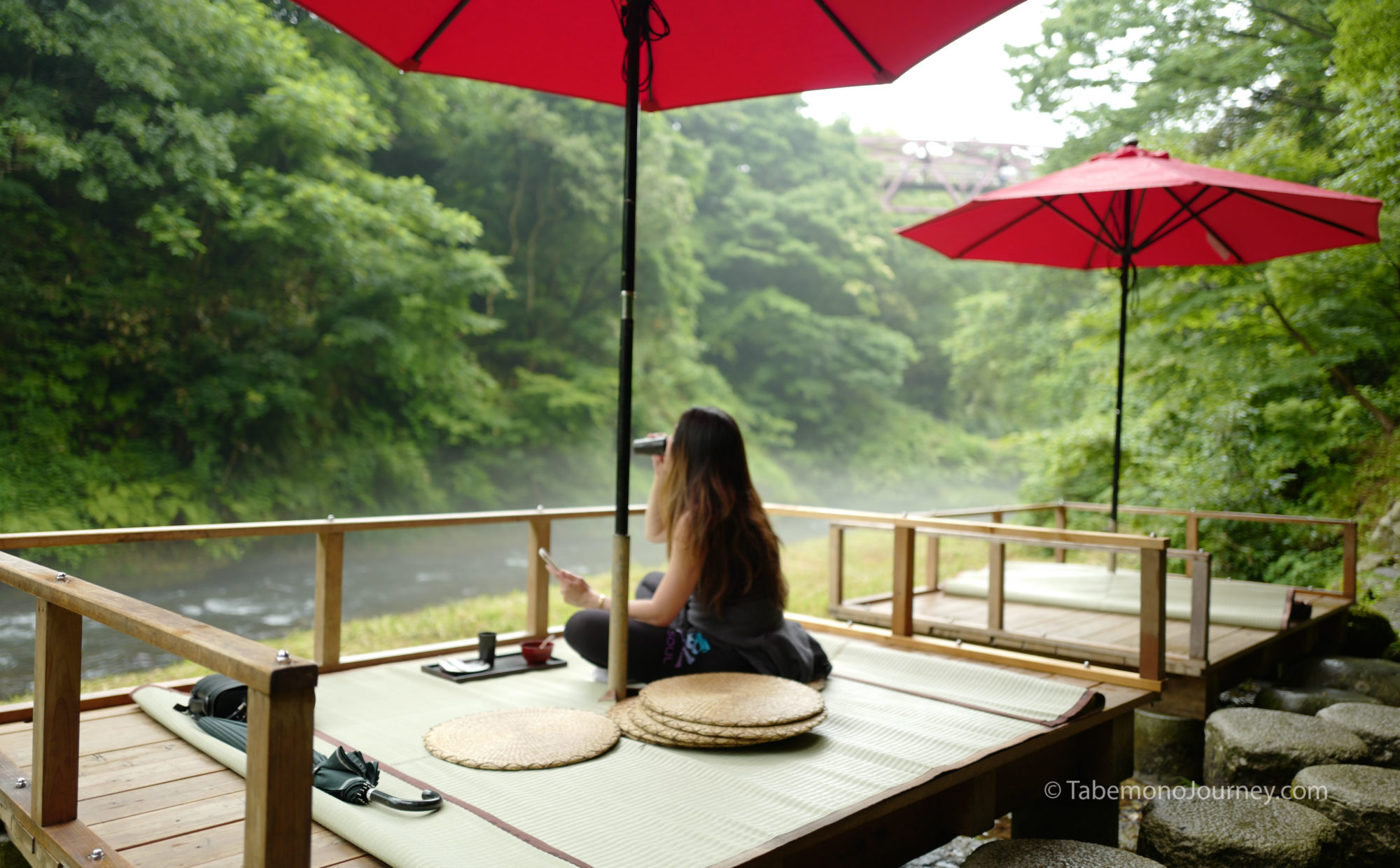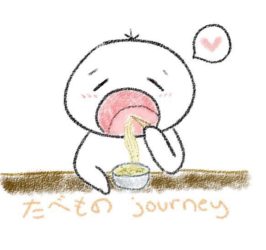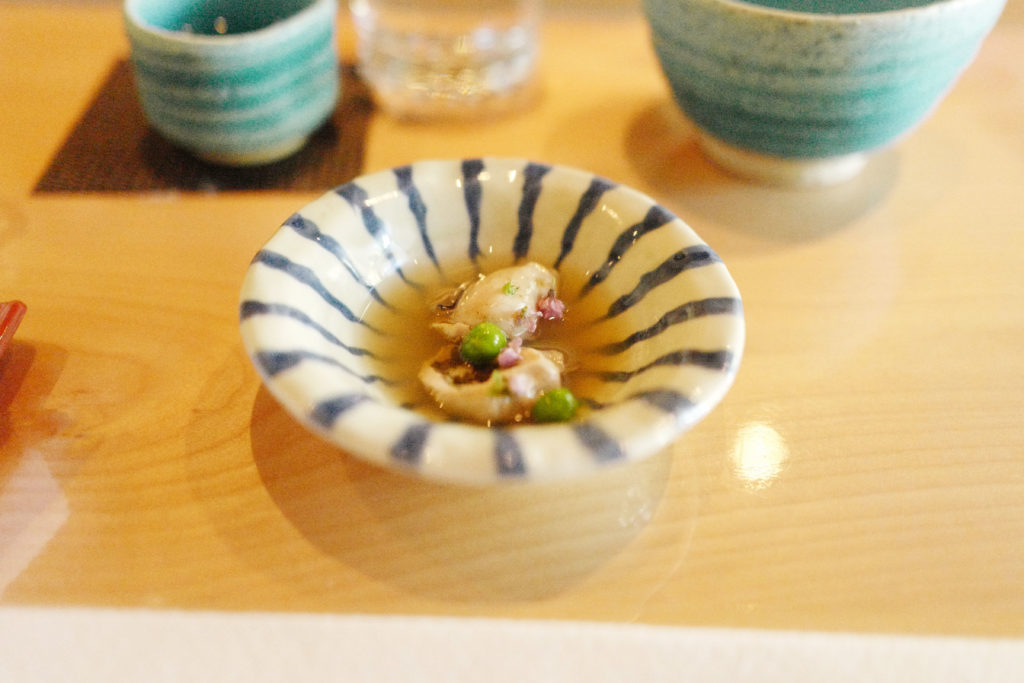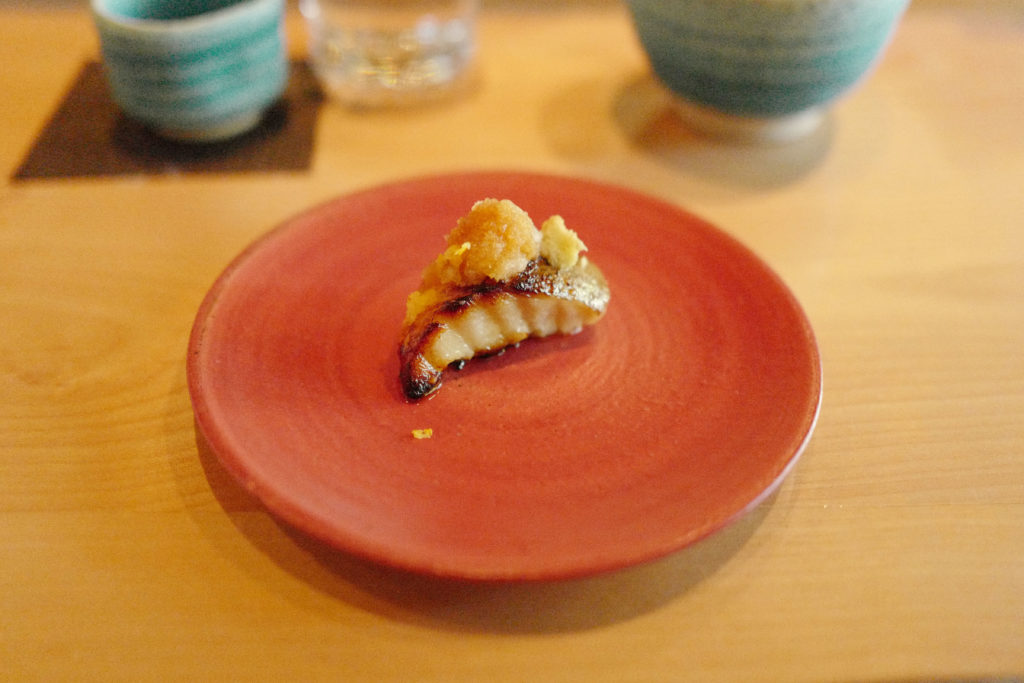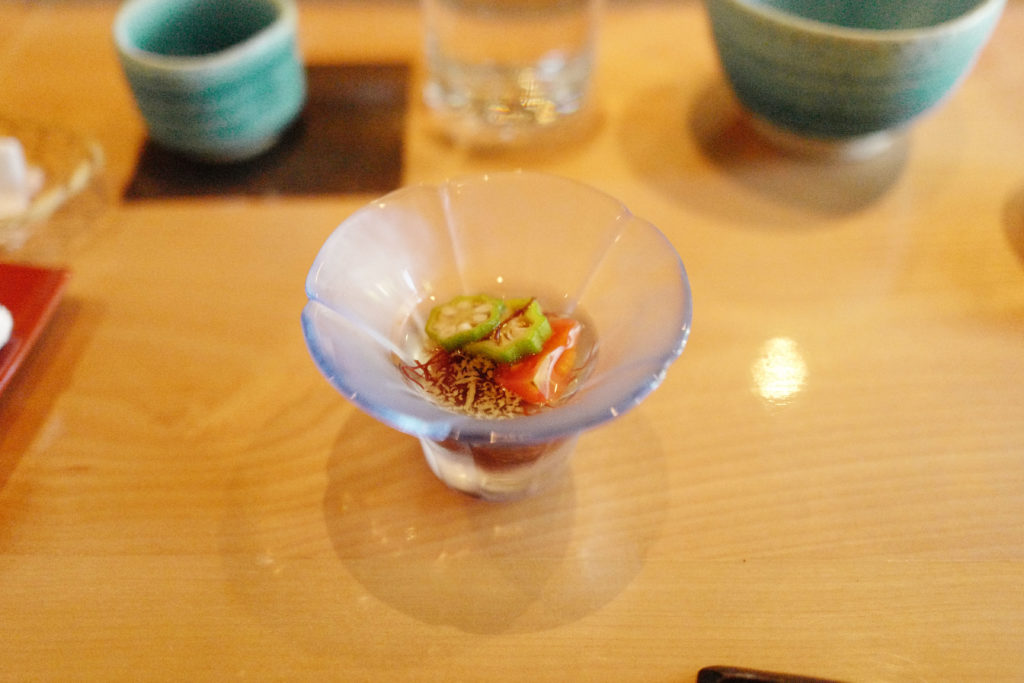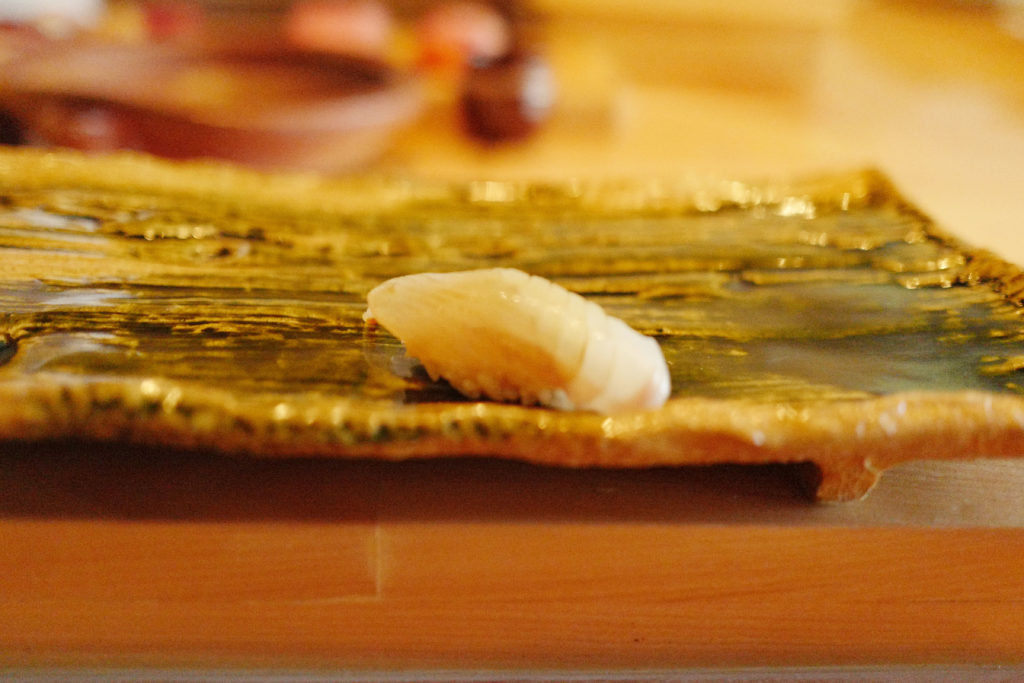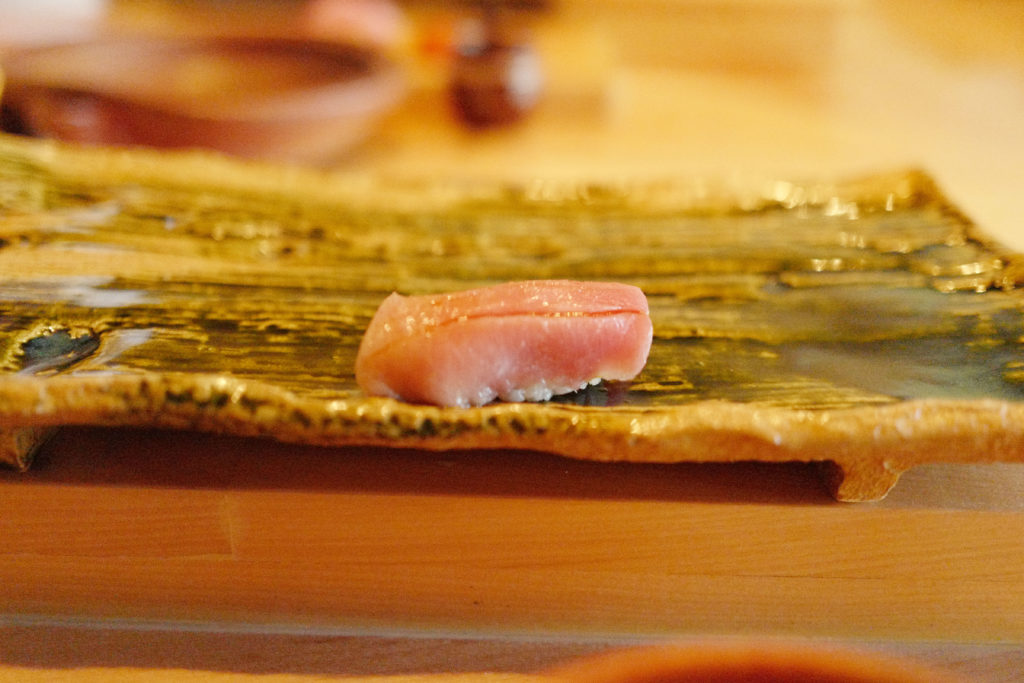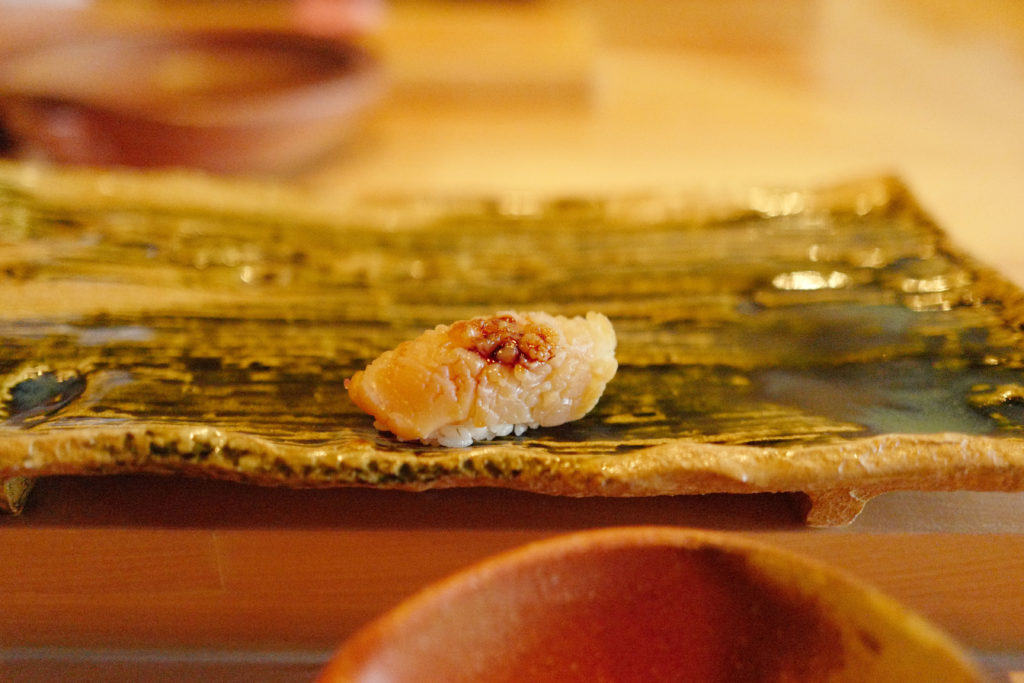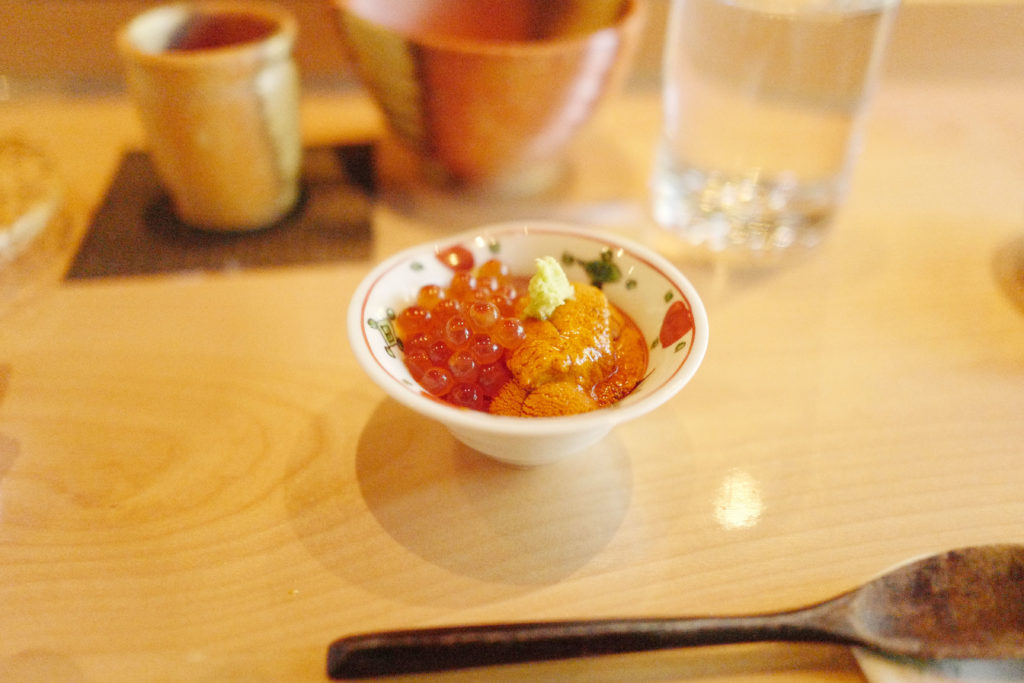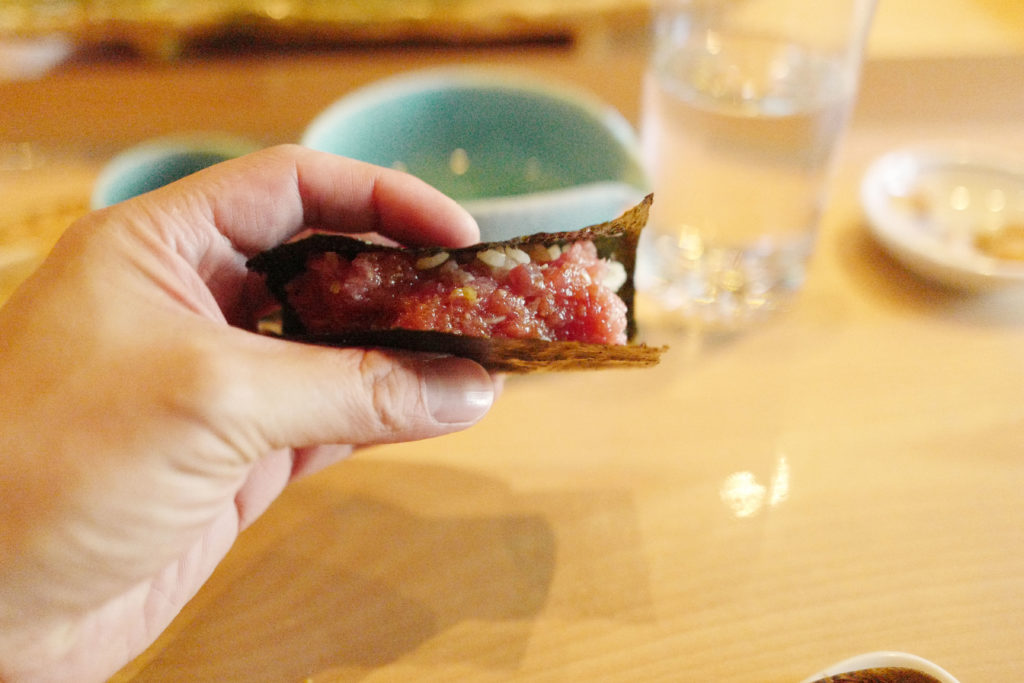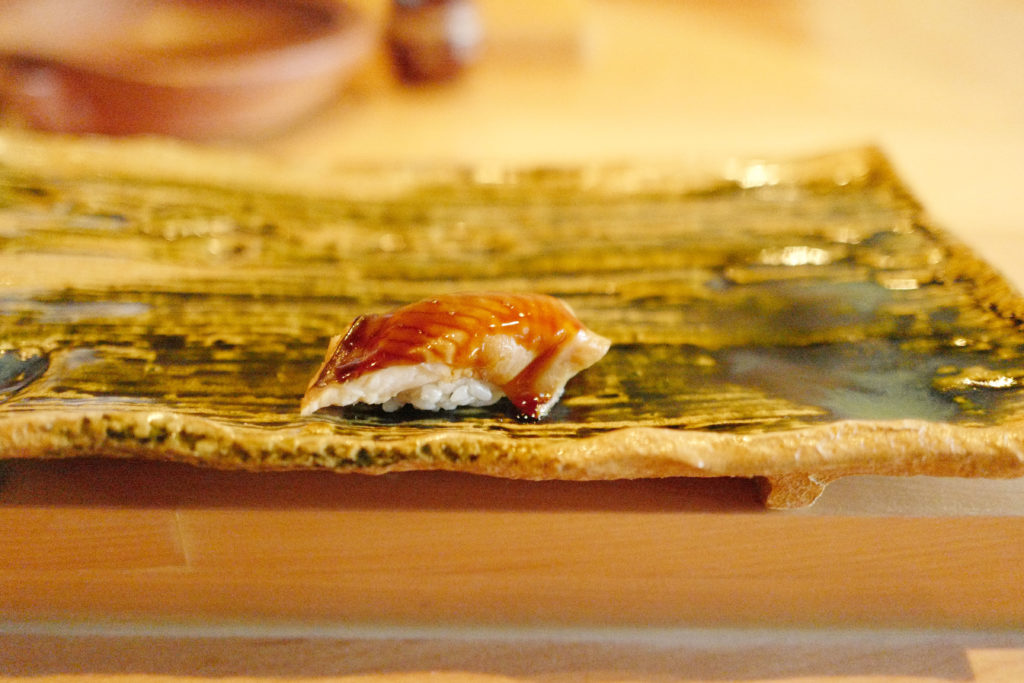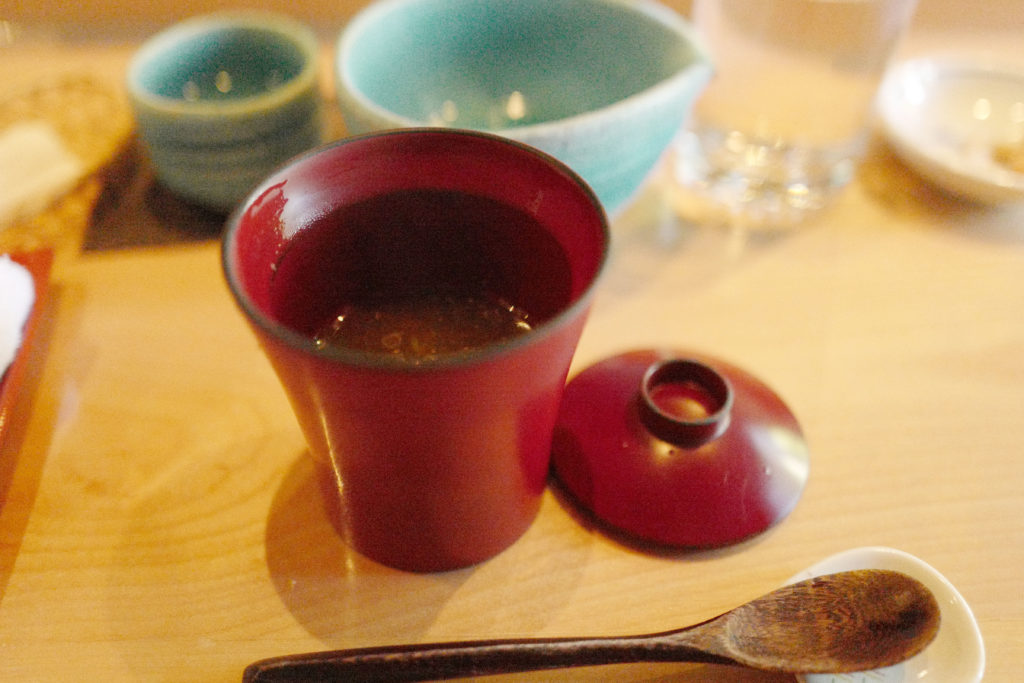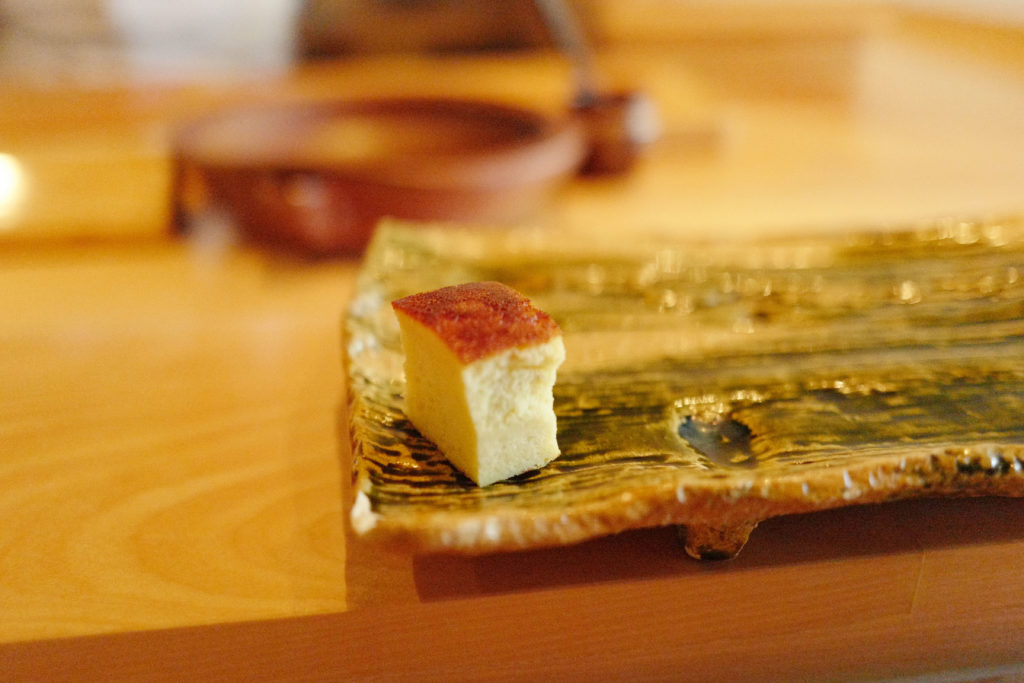July 16th, 2017
Despite the many excellent omakase restaurants that have opened in the last couple of years, there are only a couple that I would say can rival what is offered in Tokyo. Recently review, Sasaki Sushi is one of them and it is conveniently located in San Francisco proper. The other restaurant is Sushi Yoshizumi in San Mateo, and what I consider the overall best in the Bay Area. In fact, if you move Sushi Yoshizumi to Tokyo, he’ll rank right up there with some of the best I had in Japan.
Chef Akira Yoshizumi is the chef and owner of this one star Michelin restaurant. Despite the fame of having a Michelin Star, the minute open the door to the restaurant, you are warmly greeted with an “Irasshaimase!” with a big welcoming smile. Throughout the meal, you’ll see this smile and he’ll happily converse with you in friendly and warm way that just makes you comfortable and allows to to appreciate eat dish he serves you even more.
What makes him so good and stand out? It is not only the fact that he sources only the peak season ingredients both domestically and from Japan. But it’s his passion and dedication to the practices the true art of Edomae Sushi. Depending on the type, size, and fat content of the fish, the aging and curing process can be anywhere from 2 days to 2 weeks, which brings out a much more intense flavor of the fish and a softer texture. And ultimately, his shari (sushi rice) uses a strong aka-su (sake-lees red vinegar) and you can taste it in his rice. He uses Koshihikari rice grains, which is prized in sushi shops in Japan for its nutty taste and perfect texture. Ask him during the nigiri course, how long a fish is aged, and you will see that twinkle in his eye as he proudly tells you and whether a fish is at peak season and as he says “very fat” proudly.

I started visiting Sushi Yoshizumi back in 2015 when he first opened and fondly remembered that his omakase menu was priced at a ridiculously low $85 per person. This was a full course menu, where you get an amuse opener, four types of otsumami (small plates), eight version of nigiri, one hand-roll, tamago, miso soup, and a dessert to finish. Obviously that price point is unsustainable given the quality of the ingredients being sourced locally and Japan.
Fast forward to today, and Sushi Yoshizumi offers the Yohei (his regular) menu priced at $145/person and an extended menu priced at $220-$250/person. The Yohei menu course that we had in July 16th, 2017. On a side note, if you’re wondering what Yohei means, I’m going to assume that Chef Yoshizumi is naming it after Hanaya Yohei, who is credited as the inventor of Edomae sushi in 1824.
Our starter was steamed oysters, served cold in a mix of its juices and dashi. There is so much flavor and umami in this dish, it was a great way to start our dinner.
A delicious katsuo bonito, topped with mustard and a grated green onion and ginger mix. Classically prepared where it is seared over a flame of straws to provide a subtle smokiness to the rich tasting cut. This fish must be very fresh, otherwise you will get a metallic taste.
Some of the best chawamushi I had has been at Sushi Yoshizumi. It is steamed egg custard that Chef Akira makes a silky smooth egg custard that is topped with seaweed and with cuts of snapper and a umami rich glaze.
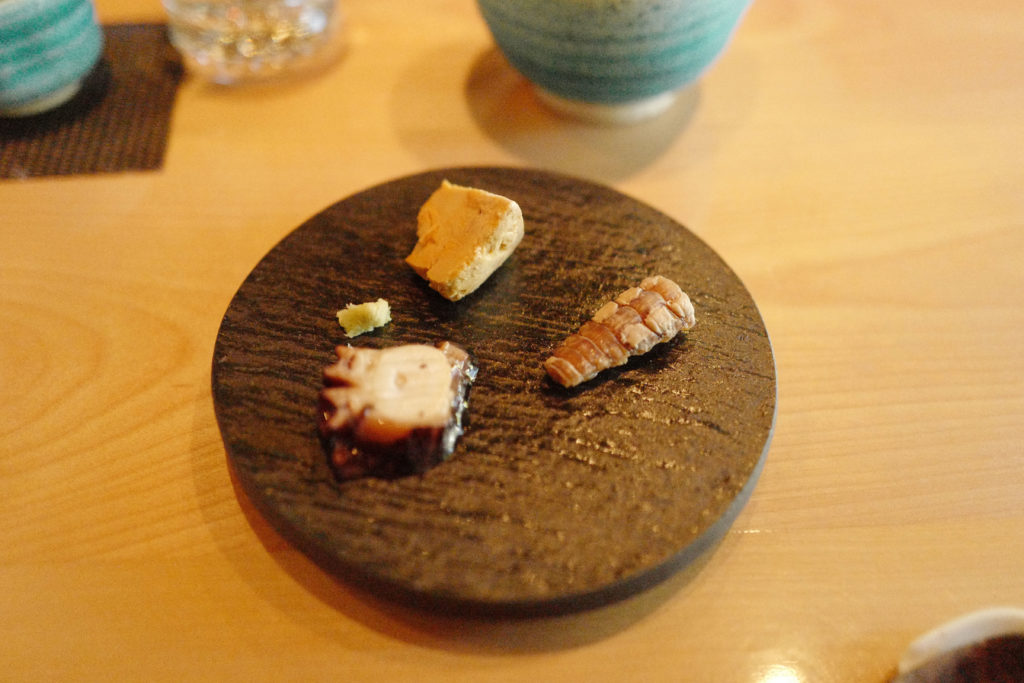
Perfect trio of small bites course. Ankimo (monk fish liver) is on top and was rich and creamy. Shako (mantis shrimp) is on the right and has a distinctive taste and texture of its own, in a very good way. Takoda (braised octopus) is on the right was soft and delicious.
Grilled gindara, black cod, is topped with grated daikon. Prepared with in the style made famous at “Nobu”, it is flakey and buttery at the same time.
Seaweed with junsai, okra, and tomato in a gold light vinegar broth served as a palate cleanser before the nigiri courses.
Suzuki is seabass and is a summer fish. Chef Yoshizumi has aged his for a couple of days to bring out a softer texture. It almost had a refreshing taste that kicks off the nigiri course in a great way.
Line caught aji, spanish mackerel. It’s in peak season from and had a nice fatty texture. Topped with a mix of grated onion and ginger. Chef Yoshizumi expertly prepared the a large whole specimen in front of us, and he proudly described the fish as very fat. It was, one of the best aji I had anywhere.
Next was an amazing two weeks aged kanpachi. It was buttery soft and had a more focus flavor. This was a dish he proudly served, and was a highlight of the night as it emphasizes the techniques of Edomae sushi, that transformed an already high quality sushi into something extraordinary.
Akami maguro is the lean meat from the Blue fin tuna. This one is from the Boston waters and aged over a week causing the flavor to be more concentrated and the texture to be softer and more delicate. During the meal preparation, you’ll see Chef Yoshizumi put the tuna slices in a soy dish marinate. Delicious.
O-toro from the same tuna. Also aged over a week like the akami nigiri. This was truly melts in your mouth and was so good.
Wild King salmon. While I’m usually not a fan of salmon for sushi, but Sushi Yoshizumi is able to prepare it in a way that removes that metallic, kinda dirty taste I had in other places with salmon. As a result, I appreciated this cut which had a buttery texture.
Iwashi (sardine from Japan) was in peak season from as it was fatty, with a clean yet distinctive flavor that I love. I simply love hikarimono fish (silver skin fish) and Sushi Yoshizumi’s strong flavored shari pairs perfectly with this strong flavored fish.
Steamed scallop that is marinated in a shoyu dashi. This was a very skill-full preparation, as the cooked scallop is perfectly cooked and the shoyu dashi complements the sweetness of the shellfish.
Hokkaido ikura and Hokkaido bafun uni “donburi” was the next course. The ikura was marinated in his custom shoyu dashi providing a crunch to the creamy and briny sea urchin. All this topped a small bed of his shari and finished with a dollop of freshly grated wasabi. You can never go wrong with this pairing.
Kin-Medai (golden eye snapper ) sushi is next. Also known as alfonsino, it is a high fat content fish. This was aged beautifully for a over week and had a texture that is neither soft nor too crunchy and a slight sweet taste.
Negi toro temaki is next, which is tuna and spring onion hand roll. Top grade nori (seaweed) sourced from Japan and slightly toasted and enhances the hand roll flavor.
Soft and buttery simmered anago (sea eel) nigiri signals that we’re at an end to the nigiri course. The anago was served warm and had a very soft texture and a beautiful sweet taste.
Red Miso soup wraps up the savory course.
Tamago-yaki has a light, moist, cake-like texture. I can easily eat a half dozen of these.

Hojicha panna cotta wraps up the meal. Hojicha is roasted green tea, and you can really taste the flavor of the tea in the dessert.
The Yohei course is very good, but I booked another reservation 2 months later for the Extended Menu, which while pricier, provides some of the more exotic seasonal selection of fish from Japan. It blew me away and and provides almost an identical experience of the high end sushi-ya of Japan. This will in Part 2 of my write up about Sushi Yoshizumi.
Address:
Sushi Yoshizumi
325 E 4th Ave. San Mateo CA 94401
P: (650) 437-2282
